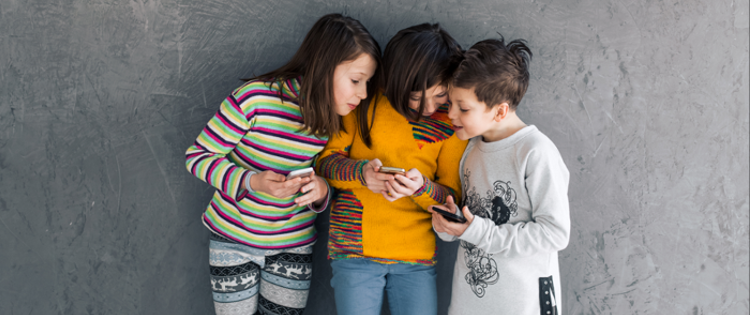
Can media use cause teens to be unhappy with their bodies and contribute to eating disorders?
Can media use cause teens to be unhappy with their bodies and contribute to eating disorders? https://mediatrics.com/wp-content/uploads/2017/04/UnhealthyEatAtM.png 750 315 Mediatrics Mediatrics https://mediatrics.com/wp-content/uploads/2017/04/UnhealthyEatAtM.pngQ: You have mentioned research showing that using certain media can make teens sad and/or anxious and that there are also studies linking negative feelings to unhealthy eating habits. Therefore, do you think that negative feelings resulting from teens’ media use, as opposed to real-life events, can lead to unhealthy eating behaviors?
~ Starving for Approval, USA
A: Dear Starving,
Use of media from glamour magazines to social media have all been shown to generate measurable symptoms of anxiety and depression, particularly in young women, in a relatively short period of time. For example, content analysis of glamour and teen magazines found that their stories focus on ways that readers can “improve” themselves. What teens absorb from these stories is that they are inadequate – their thighs are too thick, their hair is the wrong color, their eyebrows too thin, etc. They begin to feel badly about their bodies, but the magazines prosper as readers turn to their advertised products to correct their perceived flaws. Research shows that some readers feel measurably worse about themselves after consuming these media.
More popular with teens today are social media platforms such as Facebook, Instagram, Snapchat, and YouTube. Because the business model for social media is based on focusing the marketing of products and ideas, they are used by teens (and by all of us) to market how happy and successful they are rather than connecting in deep and meaningful ways. Research investigating tween/teen social media behavior shows that many post carefully selected posts and often manicured/filtered pictures to show the world how wonderful their lives are. This can make teens’ social media spheres into environments of competition that they constantly monitor in order to gauge their self-worth. When a post is ignored, does not receive enough “likes” quickly enough, or responded to with negative comments or criticism, teens can feel badly about themselves, anxious that they are not liked, or depressed that they are not accepted by their peers.
Different social media platforms work in different ways, creating a variety of psychosocial and emotional ecosystems in which users’ images are presented in different ways. Recent research shows that the more social networks young people are in, the more likely they are to be anxious and depressed, since presenting the “right” image to the right audience becomes increasingly complicated. Eating disorders such as anorexia nervosa and bulimia are driven by a desire to take control of lives that feel out of control that can be triggered by anxiety and depression. Eating behaviors, such as restricting, bingeing and/or purging can be the response to body dissatisfaction, even self-loathing, that can be triggered by social media use, particularly when social media focuses on unrealistic beauty ideals.
To fulfill their primary goal of target marketing specific products and ideas to those who are predisposed to like them, social media platforms use “filter bubbles”, software that can function as echo chambers, promoting and amplifying users’ assumptions. Instagram, Snapchat, and others that are heavily image-based can bring together young people already struggling for control of their lives with eating disorders to compete with each other at losing weight, and even to present eating disorders as a political choice or a chosen lifestyle rather than a psychiatric illness. “Thinspirational” or “pro-ana/pro-mia” posts evangelize disordered eating to convince and support others (and themselves) in these unhealthy behaviors.
Finally, and importantly, I want to stress that we can no longer contrast what happens online to “real life”. Young people move seamlessly between online environments and the physical world; they are of equal reality and importance to them. In order to parent today’s young people effectively, we need to abandon the out-of-date concept of “virtual” and “real” worlds. These worlds are one ecosystem, the world in which today’s young people live.
Enjoy your media and use them wisely,
~ The Mediatrician®




